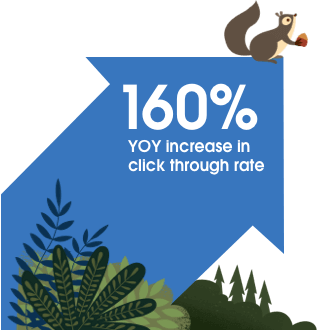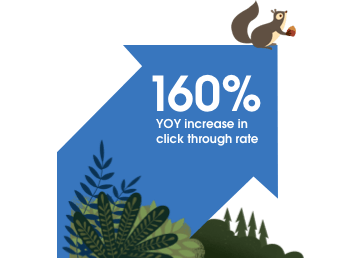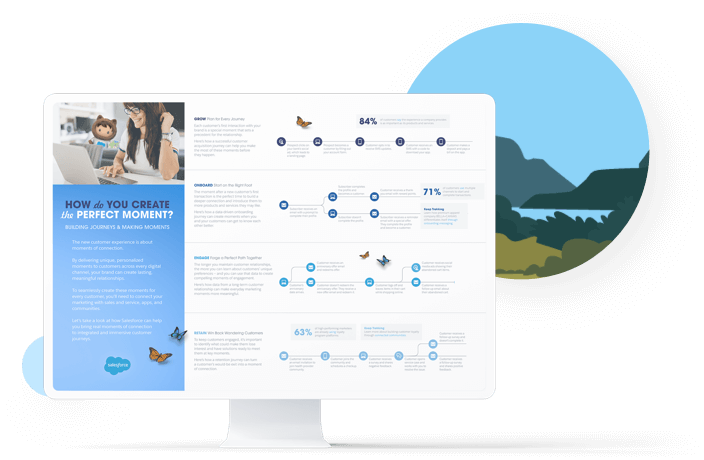Mercedes-Benz’ latest focus: perfecting the customer experience — not just in the car.
Learn how Mercedes-Benz is partnering with Salesforce to become an even more customer-centric company.
First, the founders of Mercedes-Benz invented the car. Then, the company spent another century obsessing over the finer points. Innovations came in the form of engineering feats like the anti-lock braking system or trendsetting designs like the gull-wing door. Now, there’s a new company focus, one every bit as important as its vehicles: its customers.
In a massive transformation for a company of its size and heritage, Mercedes-Benz is bringing its legendary attention to detail to everything its customers see, hear, and feel. According to CEO Ola Källenius, this starts from the moment customers begin searching for cars online and continues through all the years they’ll spend driving them.
Källenius said the idea is to give every customer a true Mercedes experience — not just in the car, but in every touchpoint with the brand.
“You can never forget why we are doing this. We’re doing it for the customer,” Källenius said. “We’re doing it for the Mercedes-Benz fans. And that’s why we are now taking that customer-centric approach into a new dimension.”
Källenius likes to say he works for a startup 135 years in the making. It was in 1886 that Carl Benz introduced the world’s first automobile, the Motorwagen, which had three spoked wheels and a top speed of 10 miles per hour. Today, innovation at Mercedes-Benz looks a little different.
“Salesforce helps us understand our customers’ needs even better. We know their purchasing history and we can anticipate what the customer is looking for. That’s the power of the technology that we’re working on together.”
Ola Källenius
Luxury for the connected age.
Take the all-new, all-electric EQS for example. The car is part of the company’s push to go all-electric.
The inside of a Mercedes-Benz – which was historically viewed as a sanctuary from the world – is now more connected than ever, with in-car technology. The 56-inch Hyperscreen dash inside the EQS can, for example, suggest an in-seat massage at the precise moment when the driver is most likely to want one, based on the person’s history of using that feature.
But the brand journey starts long before a customer can sink into the seat of his or her new Mercedes. The company’s personal touch begins on its website, where customers who choose their ideal EQS color and voluntarily share their email address return a few days later to a Mercedes-Benz homepage featuring the car in that color.
That’s where Salesforce comes in.
Mercedes-Benz and Salesforce have become strategic partners, using a management process that has been key to Salesforce’s growth: the V2MOM (Vision, Values, Methods, Obstacles, and Measures). That process led to the companies jointly adopting shared guiding principles that included “getting comfortable with being uncomfortable,” eliminating “meta work” (work about work), and engaging in a good dose of #bemorepirate rule-breaking to end entrenched inefficiencies and adopt new ways of working.
Mercedes-Benz is beginning to use Einstein 1 to unite its marketing, sales, dealer, and service teams around a shared view of each customer. Among the early results: a 160% year-over-year increase in email click-through rates.
Here are some key takeaways you can apply to your business.
How Mercedes-Benz Is Becoming a More Customer-Centric Company
1. Connected customer journeys lead to more efficient marketing.
Part of the vision the companies laid out in the V2MOM reads, “Together we innovate unique direct-to-consumer and omni-channel journeys.” That’s a reflection of a sea change in car shopping: 80% of customers now use online sources at key moments in their car-buying journey. To better understand those customers, Mercedes implemented Marketing Cloud, using data to personalize its communication and its approach.
Mercedes-Benz identified these motivations and adapted its marketing accordingly with Marketing Cloud Personalization, a real-time customization and interaction management solution that enables companies to deliver contextually relevant experiences across their channels.
“You have to be very precise to build real relationships with people.”
Franziska Noll
Ready to create customer journeys? Get the map.
Please fill out the form to see how top marketers build customer journeys to boost acquisition, onboarding, engagement, and retention.
2. Personalization will increase brand loyalty.
Fifty-four percent of customers switched carmakers in 2019. To boost brand loyalty, Mercedes-Benz supports its drivers with personalization, even after they’ve made a purchase.
Britta Seeger, a member of the Board of Management of Daimler AG responsible for Mercedes-Benz Cars Marketing and Sales, said the key is data. With Einstein 1, multiple departments at Mercedes-Benz – such as marketing, sales, and service – will be able to access shared car data, allowing the team to serve customers in the right way at the right time. For instance, once implemented, Service Cloud can help Mercedes-Benz not only detect when a car is due for a tire change, but also email its owner with a link to make an appointment at the service center that’s closest. At the same time, privacy and data protection play a very important role at Mercedes-Benz. The decision about which data to share and which service to use always lies with the customer.
“We anticipate customers’ wishes and needs,” Seeger said.

3. Digital innovation delights drivers and customers.
No matter how much time customers spend online, 70% of their final purchasing decisions are still driven by the dealership experience. Mercedes-Benz is using Experience Cloud to build a stronger bridge between the online and offline worlds. So when a customer shows up for a test drive, the dealer already knows they’re especially interested in, say, the car’s design and can tailor the conversation accordingly.
“The customer will feel that this dealer knows me – it’s not somebody I’ve never met before,” said Laura Kirndorfer, a data-driven marketing expert at Mercedes-Benz.
One key to that effort is getting Mercedes dealerships on a single CRM, a customer relationship management system. Another is training. Mercedes-Benz is using myTrailhead, Salesforce’s online learning platform, to show retailers how to use Salesforce technology to drive business growth.
“The customer will feel that this dealer knows me – it’s not somebody I’ve never met before.”
Laura Kirndorfer
4. A company culture shift fuels technological advancements.
When customers call Mercedes-Benz with a question about their car, they will no longer be asked for their car’s registration number. Their information and service history will be immediately visible to the agent, who can focus on serving the customer’s needs.
With Salesforce Professional Services and Salesforce Partners, Mercedes-Benz is also creating a fully connected customer experience, starting by transforming its global Customer Assistance Center (CAC).
The transformation is as much cultural as it is technological. Mercedes-Benz and the Professional Services team adopted the #bemorepirate mantra to encourage employees to discard old ways of thinking and bring a sense of fun to reimagining the internal processes that lead to luxurious service.
“We’ve had to refocus our whole organization to think differently. The process of building up the V2MOM with the Professional Services team has really helped us to find common ground in terms of, ‘What are we trying to achieve? Where do we want to go?’”
Ruaridh Lee

Ready to build a single view of your customer?
More Resources

Guide
The Customer 360 Playbook

Research
Sixth Edition State of Marketing

Article
Inside the Fourth Edition of the “State of Service” report






